William Wegman, Standing By, 2017, courtesy of the artist.
Wait. Wait. Okay: New Videos by William Wegman
Learn about William Wegman's 50 year career and his jump into NFTs with his iconic Weimaraners.
In 1969, William Wegman lugged a video setup out of the art department at the University of Wisconsin, where he was teaching art, and into his on-campus studio. The video kit was borrowed from the medical school where it was used by doctors to practice their bedside manner, but Wegman realized the medium had the potential for much more. One of the first artists to explore video, he began producing short, performance-oriented works, engaging directly with the screens that were increasingly mediating the American experience.
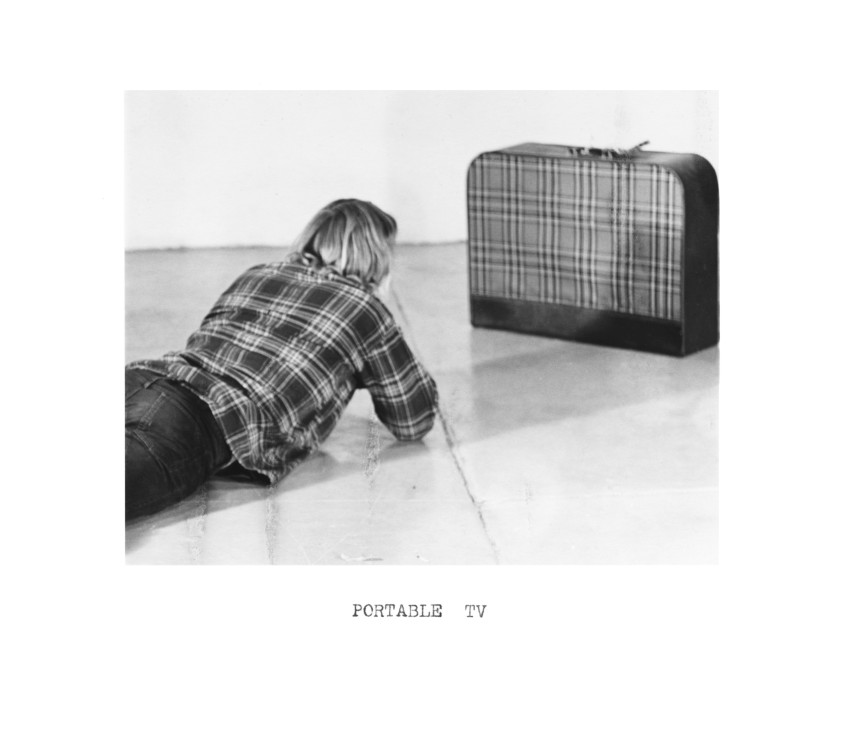
Though he first picked up a video camera in Wisconsin, it wasn’t until Wegman moved to LA in 1970 that he became a true pioneer of the medium of video art. In Long Beach, he began working with his first dog, a Weimaraner he named Man Ray. The art Wegman created during this especially fruitful time elucidates the absurd, using juxtaposition to bump against the viewer's expectations with disarming comic effect. Wegman emerged as a principal figure in the West Coast conceptual art movement, which included artists like John Baldessari, Ed Ruscha and Al Ruppersberg. The movement is characterized by subversion of norms, playful use of language, and what Metropolitan Museum of Art curator Doug Eklund calls “failure as an aesthetic strategy.” In New York, conceptual art was guided by aesthetic “rules,” while on the West Coast those rules were unseated with a kind of upbeat irreverence.

Originally trained in painting, throughout his career Wegman has moved seamlessly from painting and drawing to photography and video work, exploring overlapping themes across mediums. Wegman’s work has traveled around the world in museum and gallery shows and public art installations, and is in the permanent collections at The Metropolitan Museum of Art, The Museum of Modern Art, and the Whitney Museum of American Art in New York; the J. Paul Getty Museum and the Museum of Contemporary Art in Los Angeles; and numerous other institutions worldwide. In 2006, the New York Times art critic Roberta Smith wrote: “Mr. Wegman is one of the most important artists to emerge from the heady experiments of the 1970s.”
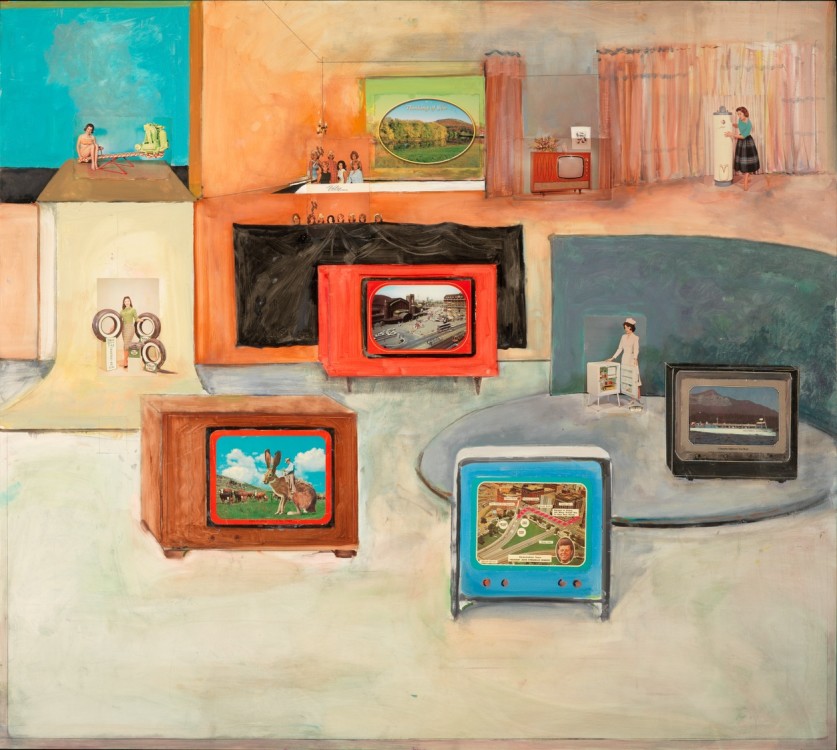
Wegman began his career as an artist during the Golden Age of Advertising. Advertisements promising transformative “New! Better!” products proliferated on American screens—promises that were appealing but ultimately empty. Wegman has played with this duality throughout his career, transforming everyday objects (New! Better!) to the point of conceptual absurdity. In Deodorant, 1972, he uses dry hyperbole to turn the utterly banal (a testimonial for deodorant spray) into the utterly bizarre. In Spelling Lesson, 1973, Man Ray and Wegman turn the teacher/student relationship on its head.
It seems fitting that Wegman’s work subverting the screen resulted in him being welcomed through the looking glass. Wegman has made numerous appearances on television, including on Saturday Night Live, for which he created his short film Dog Baseball, and where Man Ray appeared as a featured member of the studio audience.
SNL wasn’t Wegman’s only foray onto the small screen. Wegman has appeared on the Tonight Show, both with Johnny Carson and David Letterman, and on The Colbert Report. MTV too: Wegman collaborated with artist Robert Breer to create the music video for New Order’s Blue Monday. Wegman says of the project: “I liked the song but I have no idea what our video means to it.”

Perhaps Wegman’s most widely known videos are the shorts he created for Sesame Street. Beginning with his dog Fay in the late 1980’s, Wegman created dozens of short videos for the iconic children’s program. Working with legendary Sesame Workshop producer Arlene Sherman, who brought artists like Wegman, Keith Haring, and many others, to the show, Wegman and his dogs introduced an entire generation of children to language and math concepts, and gave them a crash course in humor.
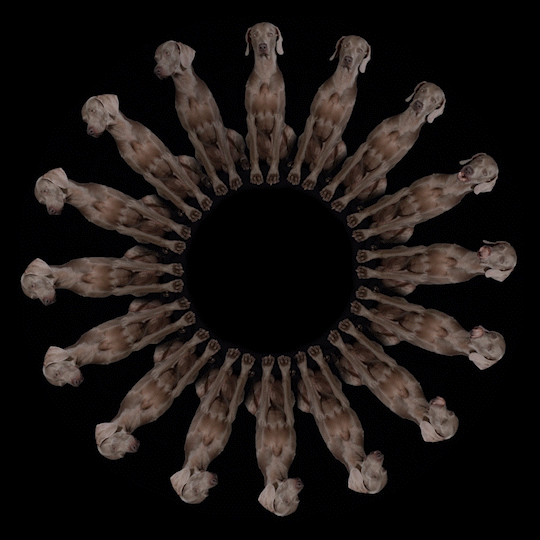
The six videos included in Wegman’s inaugural NFT series Wait Wait, minted on Verisart and exhibited at Frieze LA by Marc Selwyn Fine Art, are prime examples of his work. As Wegman videos often do, they begin with something familiar. In this case, the onscreen loading graphic. Our collective digital intermission. The little wheel that spins and spins. The transformation is shown two ways: dogs into graphic, graphic into dogs. But midway through each video, something starts to happen to the familiar animation. It breaks. The familiar circular pattern of Wait, Wait dissolves and the image explodes, or becomes kaleidoscopic. The symbol of waiting dissolves.

Each NFT is minted and certified on Verisart, the patented NFT minting and certification platform and comes with an integrated Certificate of Authenticity from the artist. The NFTs are currently available on OpenSea.
In an era mediated both by screens and by the act of waiting—lockdowns, quarantining, waiting for the vaccine, waiting for a vaccine appointment, waiting for your rapid test to arrive in the mail, staring at the little damp piece of paper for ten minutes, waiting for a line you hope doesn’t appear, waiting to go back to whatever is left of the life you knew—these videos encompass something essential about the way we live now. That somewhere in all that waiting, time stopped proceeding linearly, or even circularly. Instead, it’s all happening at once. As the symbol of waiting dissolves, so does the idea of time itself.
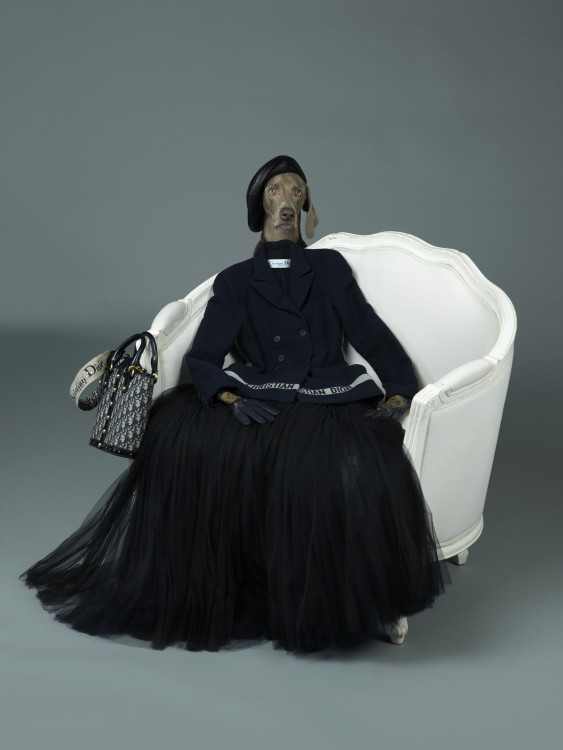
“Wait” is one of the first commands one teaches a dog. A visit to Wegman’s photo studio during a shoot will offer the word over and over—it’s key in how Wegman communicates with the dogs. Eager to work, and to do a good job, the dogs are laser focused on Wegman, holding precise poses as he asks them to “Wait. Wait. Wait.” An incantation, one that seems integral in the transformation that takes place.
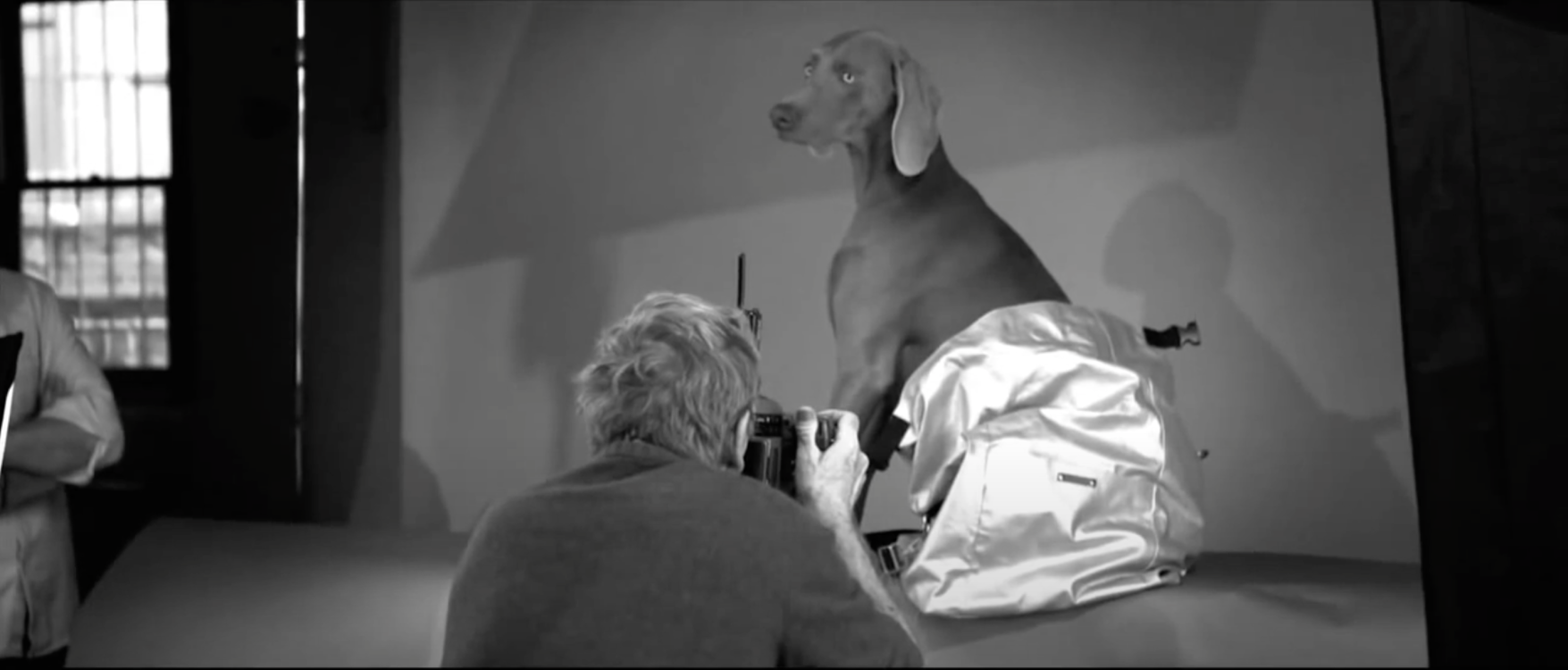
Watch the video: Acne Photoshoot
When he ends the phrase with “Okay,” the spell is broken, and the models transform back into dogs. They trot away for a sniff and a drink, wrestle each other with startling athleticism, or inspect studio visitors.
The videos that make up Wait, Wait easily find their place among Wegman’s classic works. Wegman’s iconic video Dog Duet, 1975—which features a pair of dogs moving in remarkable concert, and reveals the trick behind the baffling choreography only in the final second—is a clear progenitor of this new series, separated, it seems, by only a few generations of technology (and, of course, dogs).
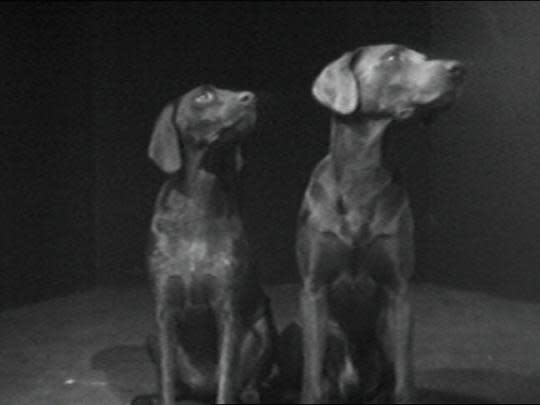
The six editioned NFTs in the Wait Wait series are available on OpenSea until March 14